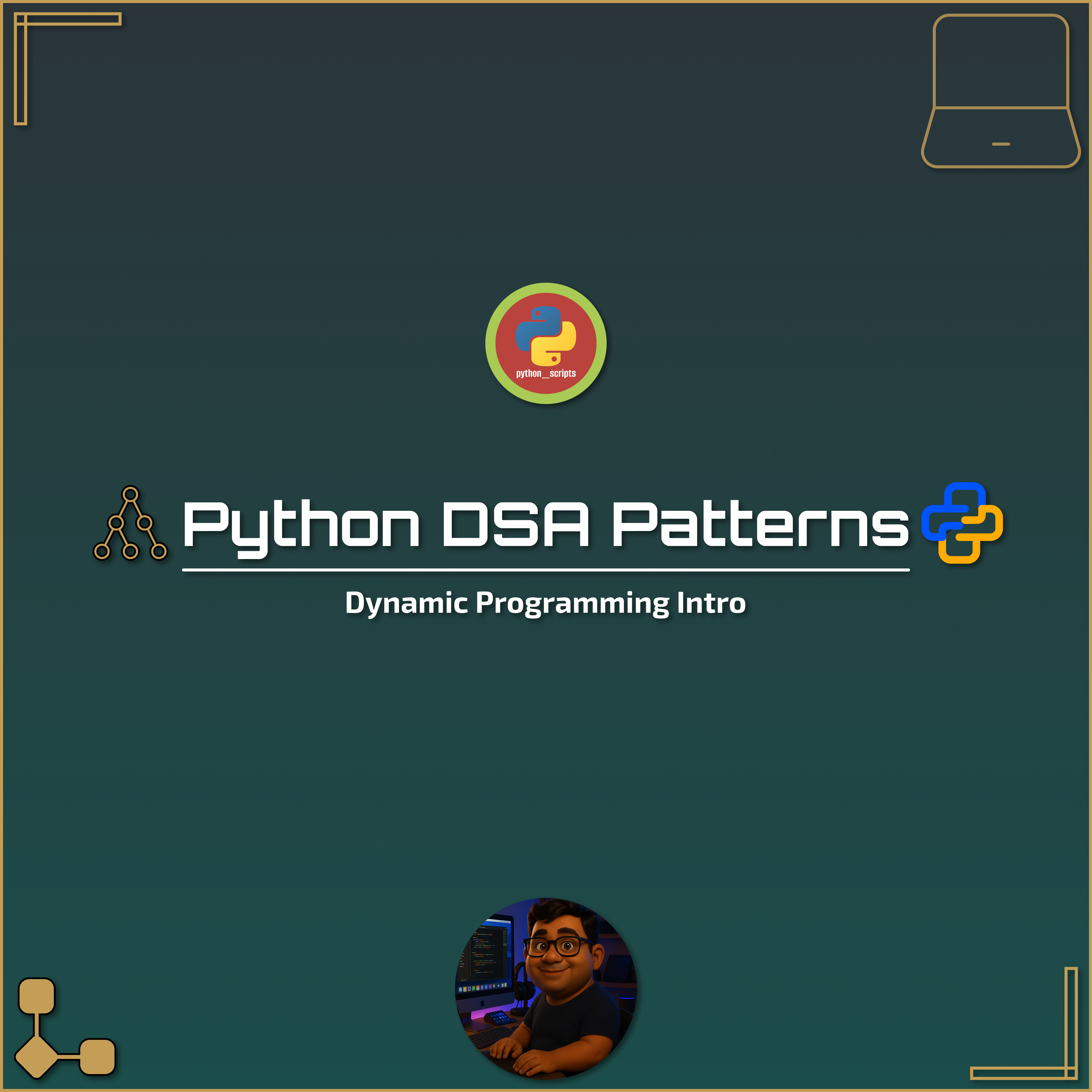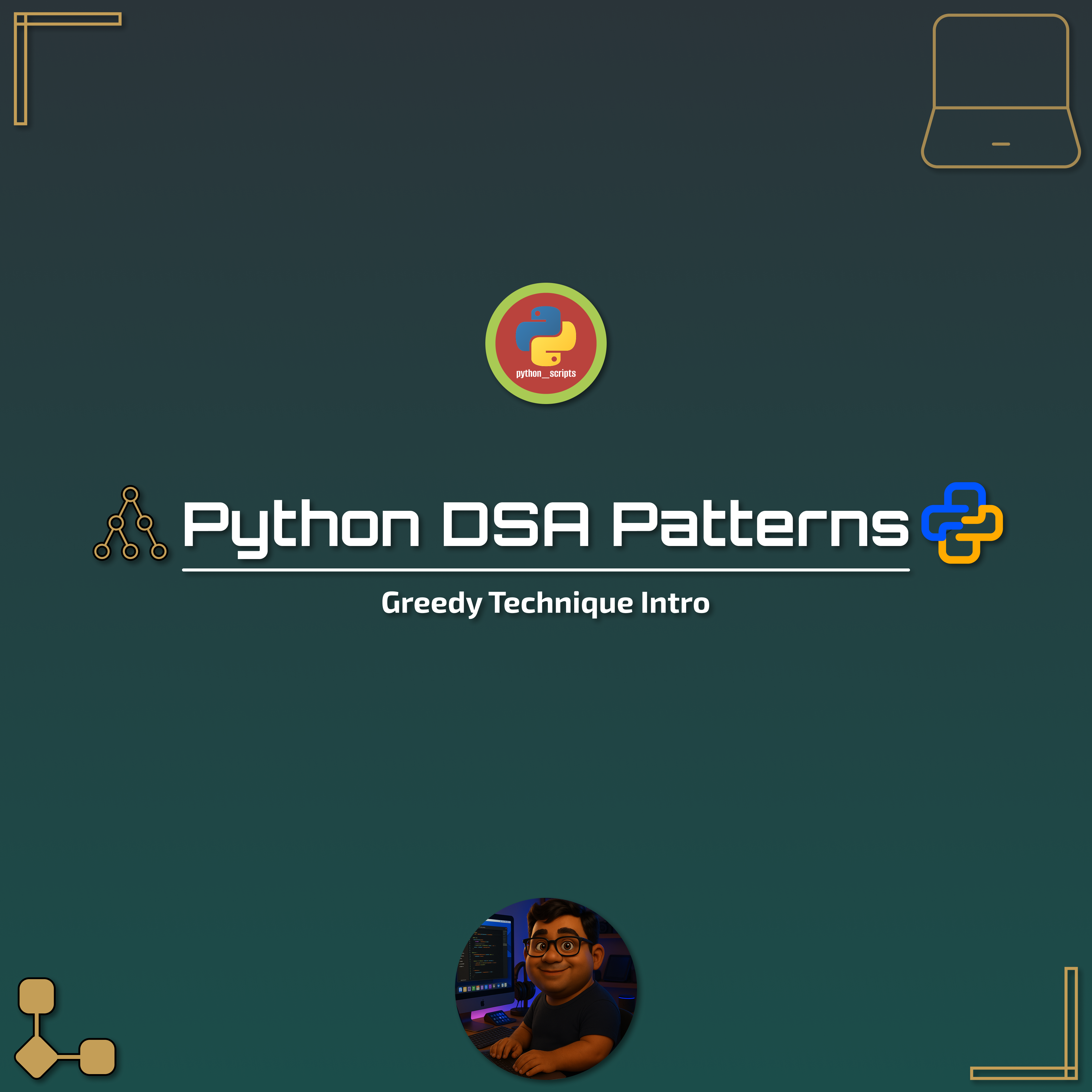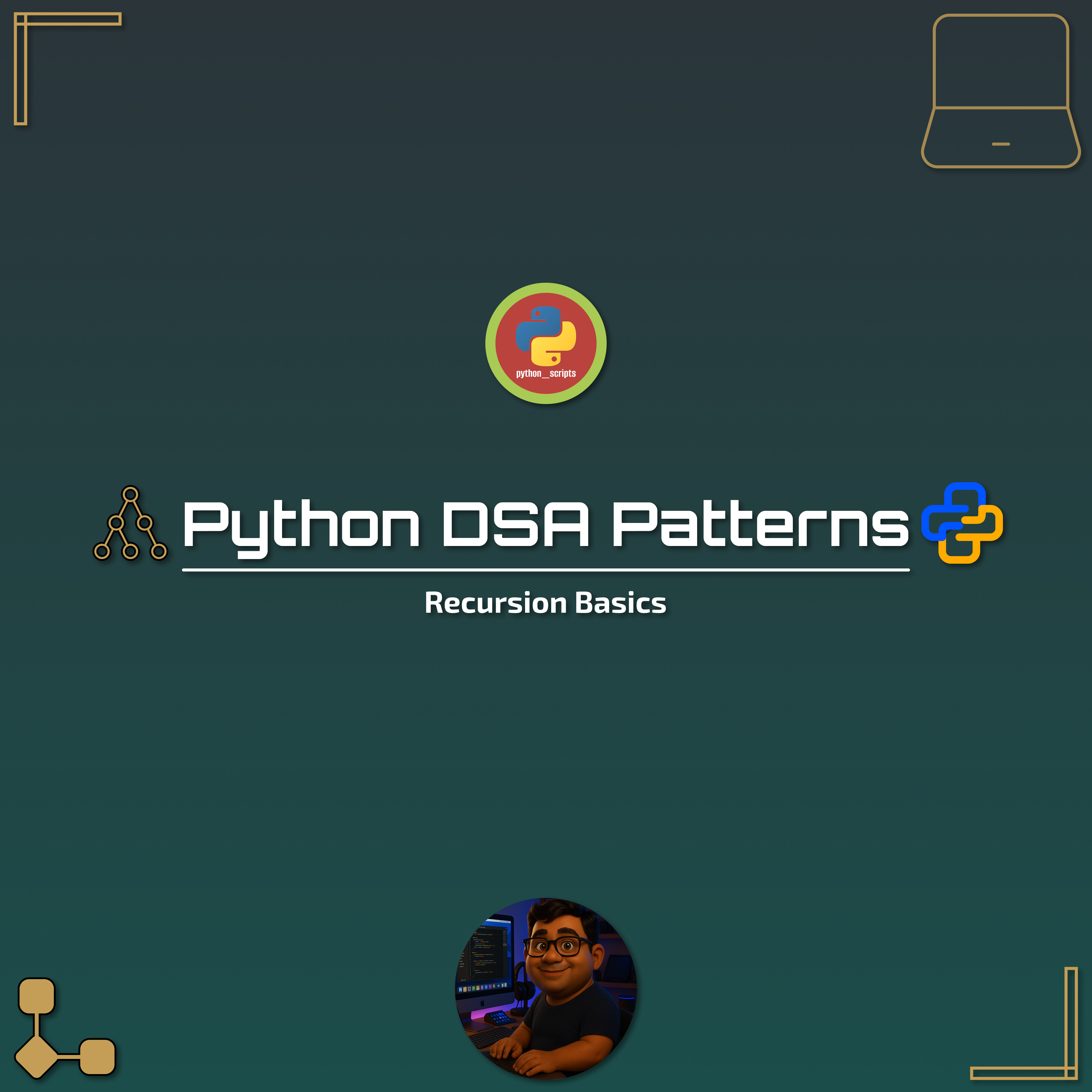🧩 Python DSA Patterns — Stacks & Queues 📦🐍
Posted On: October 24, 2025
Description:
Stacks and Queues are linear data structures that follow specific order principles for adding and removing elements.
They are essential in recursion, parsing, BFS/DFS, scheduling, and expression evaluation problems.
✨ When to Use
- When order of processing matters (LIFO or FIFO).
- When you need reversal, tracking, or processing elements in sequence.
- Common in DFS/BFS, expression evaluation, undo operations, and sliding window problems.
⚡ Stack (LIFO — Last In, First Out)
- Think of a plate stack — last plate placed is the first removed.
- Used in recursion, backtracking, bracket validation, and reverse traversal.
🧱 Queue (FIFO — First In, First Out)
- Think of a waiting line — first person in line is served first.
- Used in scheduling, BFS, task pipelines, and stream processing.
📝 Example 1 — Valid Parentheses (Stack)
Use a stack to ensure brackets are properly opened and closed.
def is_valid_parentheses(s: str) -> bool:
stack = []
mapping = {')': '(', ']': '[', '}': '{'}
for ch in s:
if ch in mapping.values():
stack.append(ch)
elif ch in mapping:
if not stack or stack.pop() != mapping[ch]:
return False
return not stack
print(is_valid_parentheses("({[]})")) # Output: True
📝 Example 2 — Evaluate Reverse Polish Notation (Stack)
Evaluate postfix expressions where operators come after operands.
def eval_rpn(tokens):
stack = []
for token in tokens:
if token not in "+-*/":
stack.append(int(token))
else:
b, a = stack.pop(), stack.pop()
if token == '+': stack.append(a + b)
elif token == '-': stack.append(a - b)
elif token == '*': stack.append(a * b)
elif token == '/': stack.append(int(a / b))
return stack.pop()
print(eval_rpn(["2", "1", "+", "3", "*"])) # Output: 9
📝 Example 3 — Implement Queue using Two Stacks
Two stacks can simulate a FIFO queue by reversing order.
class MyQueue:
def __init__(self):
self.stack_in = []
self.stack_out = []
def push(self, x: int):
self.stack_in.append(x)
def pop(self) -> int:
if not self.stack_out:
while self.stack_in:
self.stack_out.append(self.stack_in.pop())
return self.stack_out.pop()
def peek(self) -> int:
if not self.stack_out:
while self.stack_in:
self.stack_out.append(self.stack_in.pop())
return self.stack_out[-1]
def empty(self) -> bool:
return not self.stack_in and not self.stack_out
# Example
q = MyQueue()
q.push(1)
q.push(2)
print(q.peek()) # Output: 1
print(q.pop()) # Output: 1
✅ Key Takeaways
- Stack → LIFO → Used for recursion, backtracking, undo/redo, expression parsing.
- Queue → FIFO → Used for BFS, scheduling, buffering, real-time streams.
- You can build a queue from two stacks or a stack from two queues.
🏋️ Practice Problems
- Valid Parentheses (Stack).
- Evaluate Reverse Polish Notation.
- Implement Queue using Stacks.
- Daily Temperatures (Monotonic Stack).
- Sliding Window Maximum (Queue / De-queue).
Link copied!
Comments
Add Your Comment
Comment Added!




No comments yet. Be the first to comment!